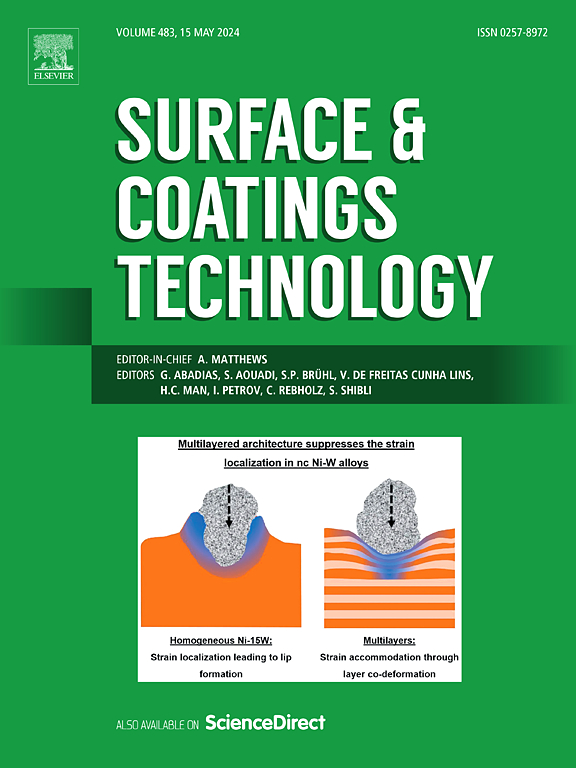Development of advanced Cu and Ni temperature sensors on ceramic-coated tubes via electroless plating
IF 5.3
2区 材料科学
Q1 MATERIALS SCIENCE, COATINGS & FILMS
引用次数: 0
Abstract
Considering the high cost of precious elements, it is necessary to replace metals like platinum or gold in the sensor sector. In this work, copper and nickel sensor circuits based on autocatalytic techniques were proposed with the aim of monitoring the temperature of cylindrically shaped (and electrically conductive) components. After electrically insulating the tube, a lithographic masking strategy adapted to the cylindrical surface was employed. The surface was functionalized with silanes to deposit a catalytic surface composed of palladium and tin. Non-critical materials such as copper and nickel were selected as sensor materials, depositing them over the catalytic surface by electroless plating. These circuits were electrically characterized on a home-designed testing equipment. Electrical resistance was measured over a range of temperatures: from room temperature up to 250 °C. The electrical results for the copper sensing layer evidenced the need for a protective layer. Silicon oxide was chosen as a protective material. However, it was observed that the sensing and protective layers interact due to their chemical affinity. In contrast, the electrical response of the nickel circuit was stable and repeatable after thermal cycling (heating and cooling), indicating that protection was not necessary for the working temperature range. The sensors developed performed well with regards to functionalization of tubes in terms of time response, repeatability, and stability at the maximum operating temperature.

通过化学电镀在陶瓷涂层管上开发先进的铜和镍温度传感器
本文章由计算机程序翻译,如有差异,请以英文原文为准。
求助全文
约1分钟内获得全文
求助全文
来源期刊

Surface & Coatings Technology
工程技术-材料科学:膜
CiteScore
10.00
自引率
11.10%
发文量
921
审稿时长
19 days
期刊介绍:
Surface and Coatings Technology is an international archival journal publishing scientific papers on significant developments in surface and interface engineering to modify and improve the surface properties of materials for protection in demanding contact conditions or aggressive environments, or for enhanced functional performance. Contributions range from original scientific articles concerned with fundamental and applied aspects of research or direct applications of metallic, inorganic, organic and composite coatings, to invited reviews of current technology in specific areas. Papers submitted to this journal are expected to be in line with the following aspects in processes, and properties/performance:
A. Processes: Physical and chemical vapour deposition techniques, thermal and plasma spraying, surface modification by directed energy techniques such as ion, electron and laser beams, thermo-chemical treatment, wet chemical and electrochemical processes such as plating, sol-gel coating, anodization, plasma electrolytic oxidation, etc., but excluding painting.
B. Properties/performance: friction performance, wear resistance (e.g., abrasion, erosion, fretting, etc), corrosion and oxidation resistance, thermal protection, diffusion resistance, hydrophilicity/hydrophobicity, and properties relevant to smart materials behaviour and enhanced multifunctional performance for environmental, energy and medical applications, but excluding device aspects.
 求助内容:
求助内容: 应助结果提醒方式:
应助结果提醒方式:


